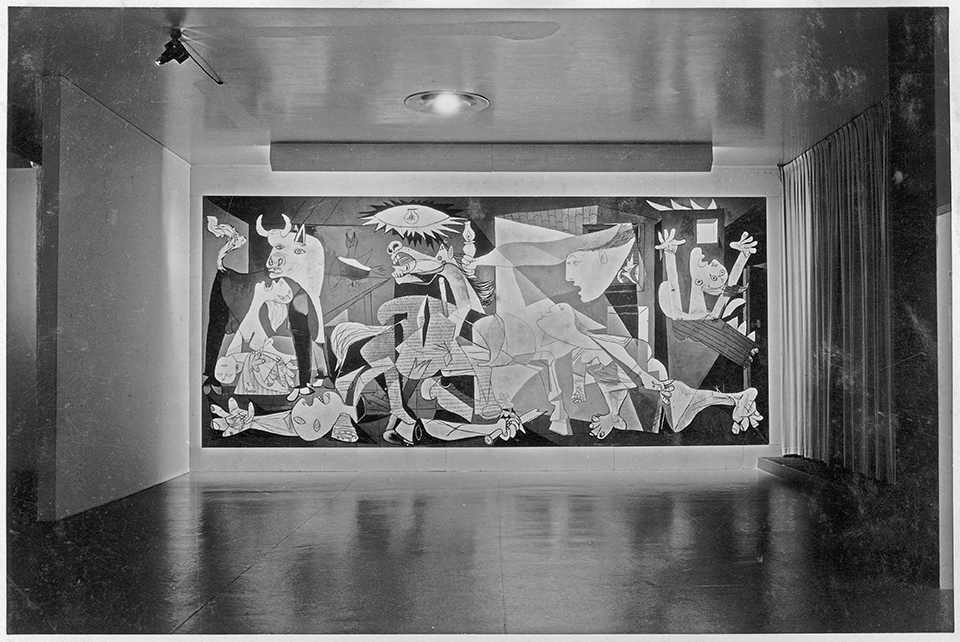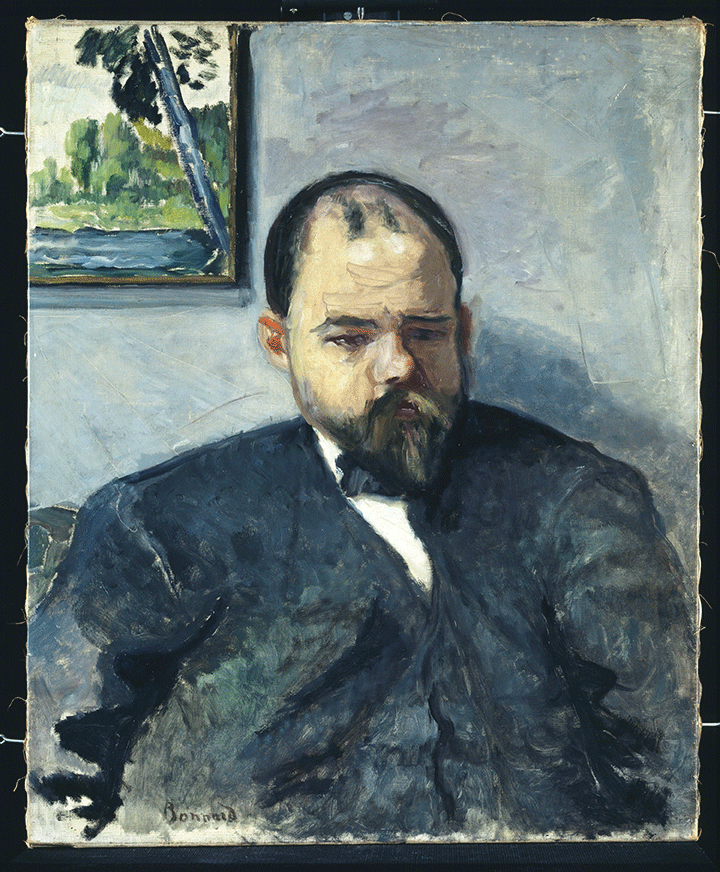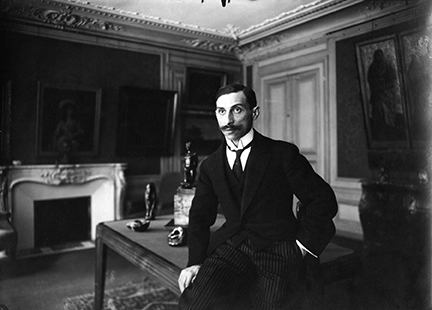« Dialogues for a New Millennium
Interview with Michael C. FitzGerald
“The transformation from the established model of the Academy to an increasingly free-market system was slow and piecemeal.”
Published in 1996, Making Modernism: Picasso and the Creation of the Market for Twentieth-Century Art is still one of the basic books for understanding the making of the art market. Written by Picasso scholar Michael C. FitzGerald, it provides a wonderfully articulated perspective on the difficulties and complexities Picasso and Matisse had to face as the avant-garde art market took shape. We spoke to FitzGerald, who is professor of fine arts and director of art history at Trinity College, about the motivations behind writing this iconic book.

Installation view of the exhibition, “Picasso: Forty Years of His Art,” November 15, 1939 to January 7, 1940. Photographic Archive. The Museum of Modern Art Archives, New York. Photo: Soichi Sunami.
BY PACO BARRAGÁN
Paco Barragán - The first obvious question to me would be: Why does academia eschew the knowledge of the art market? Neither art history nor curatorial and museums studies consider it relevant in their teachings. Why is that, in your opinion?
Michael. C. FitzGerald - I am finding that art history programs are including studies of the market in their curricula, either as a separate topic or as an aspect of larger studies. This is a relatively recent development and may be more characteristic of programs in the U.S. I have not had the opportunity to look at programs in Europe or other parts of the world. Certainly, among students who wish to work in museums, there is an awareness of the necessity of understanding the art market. Many students choose to attend programs run by Christie’s or Sotheby’s to supplement more conservative academic training.
As you say, there is still some resistance to openly addressing the art market. This approach is quite outdated, but it persists in some quarters. When I wrote Making Modernism in the early 1990s, the prejudice was quite strong. When the manuscript was reviewed for publication by a university press, one of the readers demanded that I address the ethical problem of artists being involved in the market. To me, that was a profound misunderstanding of the history of artists’ involvement in what is, after all, a capitalist economy. Happily, I was able to select a commercial publisher, Farrar, Straus and Giroux, which did not impose moralistic judgements on the text. My editor said that someone needed to write a similar book about the publishing industry!
P.B. - I consider myself an informed and well-read member of the art world, but it wasn´t until last year that I came across Making Modernism even though it was published in 1996. None of my professors or colleagues had recommended the book either, and as a matter of fact, many of my colleagues haven’t read it and hardly have any idea about the making of the market. Is there a more moralist element at play?
M.C.F. - The book is now more than 20 years old, so it would not be unusual if it had slipped out of consciousness. What is surprising to me is that it has not. Of course, the volume of publications overwhelms all of us, but I am truly surprised by how frequently the book is referenced. That is certainly true in the community of Picasso scholars-in each of our four congresses it has been a regular topic of discussion-but also more broadly among those concerned with 20th and 21st century art. Certainly many aspects of the book have been absorbed into more recent publications, yet the book still seems to be considered worth reading.
For me, the most satisfying response to the book has been by artists. This was especially true when it was published and many artists were still wrestling with the question of whether money devalued art. Over the years, many artists have told me that they found Picasso’s case liberating. It has been interesting to observe how substantially commercial activity has become openly integrated into the art world since the book was published. I don’t mean to suggest that my book had much to do with that.

Pierre Bonnard, Ambroise Vollard, ca. 1904, oil on canvas, 29” x 24.” Courtesy Emil Bührle Collection, Zurich.
Your observation that many of the people you have talked to were not aware of the book may be explained by how much we tend to focus our attention to escape the flood of information we now navigate. A 20-year-old book is, I imagine, not something that would come to the attention of most critics, who are focused on current events. My sense, however, is that you are an unusual case of an art-world observer who combines involvement in the current scene with an awareness of the past.
P.B. - How did the book come about? I want to think the fact that you were a principal in the Impressionist & Modern Art Department at Christie’s New York must have been somehow related to it.
M.C.F. - I worked at Christie’s for two years (1986-88) organizing auctions of what were called Impressionist and modern drawings. It was fantastic experience in the examination of objects, which graduate programs in the U.S. rarely teach, and, of course, experience in the market-although I soon realized that my real interest was in the historical context of works of art, rather than buyers and sellers of things. I realized that studies of the market might offer a new avenue into artists’ conceptions of their work and their reception by audiences. Ever since, the market has remained one of the analytical strategies I employ.
THE ACADEMY’S ANTI-COMMERCIAL NATURE AND THE IMPRESSIONISTS
P.B. - Before we start with the fascinating period of your research, I think we should briefly address the Academy and its failure, which opened the way for Impressionism and alternative, or anti-academic, exhibitions. What do you think the problem was?
M.C.F. - That is a very complicated problem, which could occupy an entire book and is outside my area of expertise. Nonetheless, I think one way to approach it is to look at the origin of the French Académie des Beaux-Arts. My understanding is that it was founded by Louis XIV specifically in opposition to existing guilds and largely for political reasons. One of the ways academicians distinguished themselves was by associating their art with what were considered aristocratic attributes of intellectual speculation, rather than the commercial crafts of traditional guilds. This established an anti-commercial nature that continued from the Academy’s founding in the 17th century through the 19th. It was supported by the academicians’ dependence on patronage from aristocrats and the Catholic Church. Therefore, the academy was unlikely to accommodate the entrepreneurial developments of the 19th century.

Pablo Picasso. Daniel-Henry Kahnweiler, autumn 1910. Gift of Mrs. Gilbert W. Chapman in memory of Charles B. Goodspeed. © 2018 Estate of Pablo Picasso / Artists Rights Society (ARS), New York.
P.B. - Harrison C. White and Cynthia A. White argue in their iconic book Canvases and Careers: Institutional Change in the French Painting World that most of the Impressionist artists, except for Renoir, were members of the middle class with middle-class expectations, and their exhibitions were a way to force their way into the official salon.
M.C.F. - The Whites’ book is truly one of the first to seriously study the market for modern art and a landmark in the establishment of the market as a field of study. It is always difficult to imagine new paradigms for existing structures. That is true for historians studying art history, but it was even more true for artists trying to establish their careers in the 19th century. It doesn’t seem to me surprising that the Impressionists would have sought to gain acceptance to the long-established system of patronage that existed in France. The creation of what we call the market for modern art was a slow process of transformation from the established ways for an artist to earn a living. I don’t think it was based on a theory of economic exchange but cobbled together by various artists who were experimenting with the options they thought might be useful.
P.B. - The Impressionists were experimenting with, as you say, new ways of marketing their art, but most of them only made money, if at all, at an old age. Can you explain the challenges of the market at the time?
M.C.F. - The transformation from the established model of the Academy to an increasingly free-market system was slow and piecemeal. It took a long time to connect to a wider range of potential buyers, both in economic terms and geographical ones. For many of the Impressionists, the arrival of buyers from the U.S. was a great boost to their prosperity. Once Monet and Renoir, in particular, became successful, it was easier for later generations of artist to become financially and critically successful. In a sense, the artists we call Post-Impressionist were a lost generation. They matured before the Impressionists had achieved real success and generally did not live long into the 20th century. The beneficiaries were the artists who matured in the early 20th century, particularly Matisse and Picasso.
P.B. - In your answer you articulate a series of topics that I would like to analyze more closely. For example, you mention the U.S. as a potential market that helped boost modern art. Can you explain the role of dealers like Ambroise Vollard and Paul Rosenberg and their sales strategies?
M.C.F - Vollard and Paul Rosenberg operated in very different ways. Basically, Vollard’s business was based on buying work at very low prices and waiting for it to rise in price. He held few exhibitions or did other things to promote his artists. Given how small the market for modern art was at that time and how invisible it was to the wider culture and economy, he focused on cultivating the small number of individuals who might support artists’ reputations and slowly guide a stronger market.
Paul Rosenberg entered the market for modern art at a very different stage. Having shifted his business from Old Masters, inherited from his father, he began working with Picasso, Matisse and their contemporaries after they were established, and he supported the contemporary market by trading in the sought-after Impressionists and Post-Impressionists. His goal was to greatly expand markets that were already thriving but had huge potential for growth, particularly in the U.S., where he moved his business after WWII.
P.B. - After the Impressionists came the so-called Post-Impressionists like Cézanne, Gauguin and Van Gogh that served as bridge-generation for Picasso and Matisse. Can you elaborate why you consider them a lost generation? Were they commercially successful during their lives? We know of Van Gogh’s monetary problems.
M.C.F. - Each of these artists was a different case. As you say, we are all aware that Van Gogh was a commercial failure. Cézanne inherited money, so he did not need to sell his work, and he chose not to exhibit it often. In my view, Gauguin is the most interesting case. When he moved to the South Seas, he hoped to find patronage in the French colonies, but his strategy also depended on a belief that the market for contemporary art could support him while he was on the other side of the world. As it turned out, he was overly optimistic in both cases.

Picasso’s works on view at Paul Rosenberg Gallery, in Rue de la Boetie, Paris. Courtesy Paul Rosenberg Family Archives.
PICASSO AND THE INTERACTION OF ARTISTS, DEALERS AND MUSEUMS
P.B. - The Impressionists and Post-Impressionists take us to Picasso and Matisse at the beginning of the 20th century. This was a very complex situation.
M.C.F. - The markets for the work of Picasso and Matisse are complex, and I cannot summarize my arguments in Making Modernism without overly simplifying them. I would say, however, that these two artists faced very different situations in France. As a student of the French educational system and a citizen, Matisse had easier access to French dealers and began working with Bernheim-Jeune relatively early. Certainly, he struggled, and he even tried to create his own support system by organizing a group of collectors who would underwrite his work by paying a monthly sum, if I recall correctly, against a promise of future work. His contract with Bernheim reserved certain types of work, such as portraits, from commissions by the gallery, suggesting his personal involvement in selling his work.
P.B. - And what about Picasso?
M.C.F. - As a Spaniard with few contacts in France, Picasso was far less secure during his early years in Paris, even though he had a Spanish representative who helped him secure the Vollard exhibition in 1901. Picasso avoided the public exhibitions, which so benefited Matisse and Fauves. While Picasso was successfully drawing support from important collectors, including the Steins, I wonder if he would have achieved the financial security that underpinned the development of Cubism if the German dealer Daniel-Henry Kahnweiler had not arrived in 1907 to support his career with such dedication.
P.B. - As a way of rounding this up, what do you think artists and especially dealers today can learn from the making of the modern-art market?
M.C.F. - The coordination that we see today among artists, dealers and museums-by which I mean curators, directors and trustees-has been present since the market for modern art became established more than a century ago. It was surprising to many when we began to uncover this system in the late 20th century. It is now well known and widely accepted although still a focus of controversy among the competing interests of creators and consumers of art, categories that become increasingly fluid. At least now, we are aware of the issues and have tools to analyze them.
P.B. - You’ve been very involved with Picasso. Have you done any recent projects or publications about him or have you new ones coming up?
M.C.F. - A year ago, my friend Bernardo Laniado-Romero, who was previously director of the Museu Picasso in Barcelona, invited me to contribute an essay to the catalogue of an exhibition of Picasso’s late work that he was curating for the Barberini Museum in Potsdam. It is a very lively new museum operating on a Kunsthalle model. This invitation got me thinking about Picasso’s post-WWII work, which has not been a primary focus of my research. I chose to write about the 12 retrospectives of Picasso’s work that were held during the postwar period. Beginning in 1953 and ending in 1966, they ranged from Rome to Paris, Munich, São Paulo, New York, Montreal and Tokyo. My focus was the problem that I cited in my previous response: the interaction of artist, dealer and museum in organizing major exhibitions. The availability of documents during this recent, but historical, period enables us to uncover much of the collaboration that underlay the presentation of Picasso’s work in those exhibitions, what Kahnweiler called ‘propaganda’ in a letter to Picasso. Recently, I had a conversation with an ex-editor-in-chief of a prominent art journal, who is also closely related to a prominent gallery in New York. When I told him about the project, he urged me to continue the research because he thought it is the best way to delve into models for what is happening today.

Installation view of the exhibition, “Picasso: Forty Years of His Art,” November 15, 1939 to January 7, 1940. Photographic Archive. The Museum of Modern Art Archives, New York. Photo: Soichi Sunami.
My essay was published as ‘Crucibles of Reputation: Picasso’s Retrospectives During the 1950s and 1960s’ in the English edition of the catalogue, not the German edition. I will continue my research into the topic during the next year, when I will be teaching in Barcelona and conducting research in France on a leave. I highly recommend the exhibition, which closes on June 19th.
P.B. - Thank you for your time and for this fruitful interview.
Paco Barragán is a PhD candidate at the University of Salamanca (USAL) in Spain and the former visual arts curator of Centro Cultural Matucana 100 in Santiago, Chile. He recently curated “Juan Dávila: Painting and Ambiguity” (MUSAC, 2018), “Arturo Duclos: Utopia´s Ghost” (MAVI, 2017) and “Militant Nostalgia” (Toronto, 2016). He is the author of The Art to Come (Subastas Siglo XXI, 2002) and The Art Fair Age (CHARTA, 2008).



































